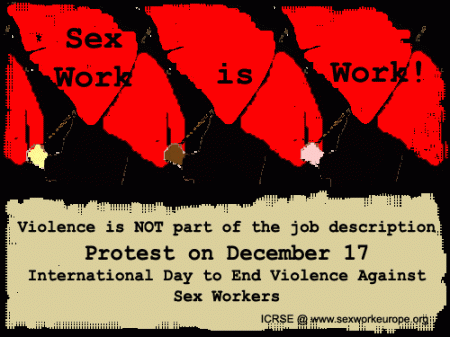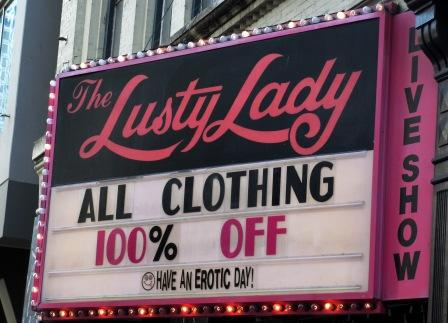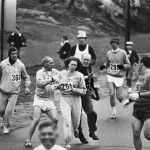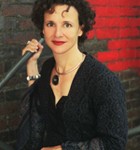This past March, Appalachian State University (in Boone, North Carolina) put Dr. Jammie Price, a tenured professor of sociology, on administrative leave. Price was suspended after showing a documentary film which critiques the pornography industry, titled “The Price of Pleasure.” This temporary suspension was enacted as a result of four students’ protest to university administration; they claimed that the film was “inappropriate” for classroom use.
Of course, there has to be a backstory to this. Various sources report that Price was known as a vocal critic of university practices, such as their handling of sexual assault allegations leveled at student athletes.[1] Prior to screening the film, student athletes had complained to university officials that she had created a hostile environment by facilitating classroom discussions on sexual assault accusations against student athletes on the ASU campus.[2]
After conducting an investigation (in which the University states that it did not focus on the screening of the film itself, but the manner in which the classroom was conducted), the Provost has allowed Dr. Price to return to the classroom as long as she consent to a mandatory “professional development plan.” This professional development plan requires Dr. Price to, among other things, develop and implement steps to contextualize and debrief “sensitive” material in the classroom.

Sexuality scholars, researchers, and activists should be concerned about Price’s suspension for many reasons. This includes standard concerns about academic freedom, and questions of academic integrity in dealing with the complex and controversial matters of sexuality, power, and media. This also includes concerns about the “backstory” of student backlash (i.e. critically examining the gender, race, and sexuality dynamics of when students complain about their professors). But this case is also important for an additional set of concerns: that of sexual rights and justice as they pertain to sex work and sex workers.
Dr. Price’s suspension based on her inclusion of “graphic” material in the classroom has lit up the blogosphere. Some have drawn on the language of “academic freedom” in order to conceive of it as a tool to promote truly inclusive democratic debate. Gail Dines — a well-known anti-porn feminist who is featured in the film, has leapt to the defense of Professor Price and the film, The Price of Pleasure. Given the film’s sudden prominence as an educational tool and as a catalyst that re-ignited long held debate about academic freedom, it’s worth pausing to examine the film itself.
The film, produced and distributed by the Media Education Foundation, purports to examine “how pleasure and pain, commerce and power, liberty and responsibility have become intertwined in the most intimate area of our lives.” The MEF is a popular source for academics seeking to include educational films in the classroom and it is known for producing films that espouse similar anti-porn themes (The Bro Code, Dreamworlds). The Price of Pleasure includes clips from pornographic films with the claim that these clips “represent current trends in mainstream pornography.” Some porn performers featured in the film have criticized it for the ways in which they felt the film purposefully misrepresented their perspectives and encoded a patently anti-porn message into something they were told would be an “unbiased” exploration.
Gail Dines, a professor of Sociology and Women’s Studies, at Wheelock College was a senior consultant for the film.[3] The film argues that porn has become what Linda Williams has described as “on/scene”: in other words, that “sexual scenarios” once considered “obscene” have increasingly become part of the public sphere (albiet via public scandal) [4]. However, unlike Williams, the filmmakers name this as a universally bad phenomenon.
Some might critique the filmmakers for espousing a nostalgic, moralistic wish for the “way we never were” (a world free of commercial sex and its’ depictions). A brief survey of U.S. history reveals that commercial sex has been an integral feature in public social life (albeit in different ways) at different moments in time.[5] The filmmakers attempt to sidestep this critique by utilizing a somewhat crude version of Marxist mechanics. For example, in the opening scene, Gail Dines explains that she is accused by some for being “anti-sex” because she critiques pornography, but what such critics don’t realize is that you can criticize McDonalds and still eat food.[6] The comparison doesn’t quite hold up on at least two fronts.
First, unlike food, it is difficult to trace the effects of any cultural product, including pornography. Without rehashing the feminist sex wars and an entire body of social scientific literature, there is no consensus that consumption of pornography causes the perpetuation of sexual violence.[7] Furthermore, the idea that representations directly impinge on or cause individual actions is one that some feminists –via such campaigns as the reform of rape laws—have long sought to contest.
Given the absence of strong direct evidence that porn causes sexual violence, some anti-porn activists instead argue that pornography promulgates a “worldview” that reifies gender inequality writ large and has harmful consequences to the public at large. There are two main components to this anti-porn argument:
- porn as a genre universally “objectifies” women, by which they mean that it, more than any other media outlet, trains them to relate to their bodies as a site of scrutiny, to eroticize submission and “degradation,” and that these activities can never be a source for women’s self-creation or pleasure.
- pornography leads men (as Robert Jensen, Professor of Journalism at the University of Texas, testifies in the film), to have difficulty distinguishing between the modes of relating to women enabled in and potentially appropriate to erotic fantasy and the modes of relating to women on an everyday basis in which they are not sex objects that are continually available for one’s sexual use.
Embedded in The Price of Pleasure are these logics of direct and uncritical consumption: What you watch becomes who you are. Perhaps this is the message Professor Jammie Price was hoping to introduce to her students. It’s worth asking whether this message alone is able to stimulate expansive and inclusive classroom debate on the topic of commercial sex. It’s worth asking whether this logic is representative of the diverse body of intellectual thought on media reception—which frequently demonstrates that people contest, resist, rescript, as well as reproduce, inequalities in their interactions with media texts.
But it is actually the second part of Dines’ food metaphor (re: McDonalds) that I am interested in. The “McDonalds” analogy situates the amorphous public and producers of porn in a morality tale. In this morality tale, the public are those who, barraged by porn, are being sold a dangerous and harmful product. Producers are either callous, usually male, profiteers or the sex workers themselves, who are either victims or “brainwashed” apologists. To this end, the only self-described former sex worker interviewed at length in the film is Sarah Katherine Lewis, who speaks about what she loathed about working in the sex industry, pointing out that the only options open to her at the time were working in service economies—McDonalds or sex businesses. Either way, the workers in the films are not the ones asked to offer definitive meanings about or set the agenda around business practices. The McDonalds analogy essentially eliminates from the terms of the debate the desires, needs, or interests of those who work at the McDonalds in question, those who for whatever complex array of reasons and motivations make their living via sex work.
Sex workers (and allies) who craft their own intellectual analyses and political agendas around questions of political economy, labor and human rights, and the politics of representation are not even intelligible within the schema of the “anti-McDonaldites.” Based on watching The Price of Pleasure alone, viewers would have no idea that sex worker advocacy groups have advanced trenchant critiques about what can be done to improve their working conditions and social existence.
The case of Professor Price reveals the extent that academic discussion of pornography often centers on the (presumably) non-sex working academic, or the academic advancing an anti-porn critique. No one seems to be questioning the anti-porn message of the film —a message that was perhaps lost on the students who felt violated by its graphicness. What then what does that say about the state of protections for academics and aspiring academics who are current or former sex workers? Or simply those who wish to include in the classroom the voices and worldviews of sex workers speaking on their terms?
In response to Price’s suspension, Gail Dines suggested that if Price had given a ringing endorsement of commercial sex businesses or to have invited what she likes to call “pornographers,” or sex workers and adult business owners (often one and the same), to speak on campus, all would be good in Price’s life.[8] This characterization is reminiscent of what Michael Bérubé has described as the movement of “campus conservatives to construe themselves as victims of liberal intolerance.”[9] Dines may not consider herself a campus conservative, but her fanciful claims about the supposed cultural status of sex workers belie the myriad ways in which academic research has historically stigmatized those working in sex industries. Moreover, it defies recent evidence that suggests that the mere introduction of discussions of commercial sex cultures to academic spaces are often met with protest.

For instance, in 2008 the president of the College of William and Mary did not have his contract renewed in part for his begrudging refusal to censor the Sex Workers Art Show, who had been invited by student organizations to perform on campus.
The implication that former or current sex workers are immune and protected from pervasive forms of discrimination in the academic (or any other) workplace is beyond farcical. Were Price to have been suspended for having once been a sex worker, let alone dared to introduce that in the classroom, who would be speaking up for her? Dines herself proudly admits to a record of opposing the decision to “allow” those working in the commercial sex industry to speak on university campuses.[10]
Make no mistake, sex workers and former sex workers who are also students, are at jeopardy of losing their jobs in education and their place in institutions of higher learning. In 2001, a student at California State University-Fullerton was ejected from the track and field team for working as a stripper to pay her way through school. She was outed by male athletes who attended the strip club and who had no disciplinary action taken against them. In 2010 a former sex worker who had written openly about her experiences in the sex industry was fired from her position with the New York City Teaching Fellows Program. More recently, Stacie Halas, was fired from her position as a science teacher at a public school when students “discovered” that she was a former porn performer.
How might starting our analysis of the state of academic freedom from these stories complicate our understanding of what is at stake, and for whom, in the disciplining of academic bodies? Lisa Johnson, in her astute observations on the Price incident, points out that “there is still no vocabulary for resisting the conservative moral framework that says graphic sexual material is inappropriate for the classroom, and no public statement of feminist pedagogy that says our notions of what is deemed proper in the classroom are part of the very status quo that WGS (Women & Gender Studies) generally interrogates.”
While I agree with Johnson that too often feminist academics avoid publicly articulating the value of the explicit challenges to sexual normativties they explore in the classroom, it’s important to delineate where these challenges actually diverge. These divergences may very well work to consolidate an understanding of academic freedom that claims the virtues in speaking about “disreputable” topics in order to stimulate learning and/or to debate certain kinds of conclusions. Yet in doing so, they may very well replicate and embed social stigma against “disreputable” ontologies or subjects themselves. The consequences of this move do not just affect the educational opportunities for sex workers. Rather, they go to the heart of how scholars define the ethical and methodological questions that arise in studying historically marginalized communities.
At a moment in which an international movement for sex worker human rights is gaining momentum, it is worth reconsidering how the available intellectual frameworks frame commercial sex and represent commercial sex workers, and remind ourselves of the panics that invariably emerge around the presence of commercial sex in the classroom. Such panics function to demarcate the boundaries of how any stigmatized topic is or is not allowable as a topic of learning and how marginalized groups, including sex workers are allowed to participate in academic cultures.
Jayne Swift is a doctoral student in Gender, Women, and Sexuality Studies at University of Minnesota. Her areas of specialty include Commercial Sex Cultures & Obscenity, and Queer and Feminist Theory.
[1] Monte Mitchell. “ASU professor suspended after showing film on porn business, expressing views on athletes, racism,” Winston-Salem Journal. April 24, 2012. http://www2.journalnow.com/news/2012/apr/24/2/asu-professor-suspended-after-showing-film-on-porn-ar-2202862/
[2] Kellen Moore, “ASU professor decries university action,” WataguaDemocrat.com April 24, 2012. http://www2.wataugademocrat.com/News/story/ASU-professor-decries-university-action-id-007608
[3] The Price of Pleasure. Dir. Chyng Sun, Media Education Foundation, 2008.
[4] Linda Williams. “Porn Studies: Proliferating Pornographies On/Scene: An Introduction,” in Porn Studies. Ed. Linda Williams. Duke University Press: 2004.
[5] See: Andrea Friedman, Prurient Interests: Gender, Democracy, and Obscenity in New York City, 1909-1945. Columbia University Press: 2000. Mara Keire, For Business and Pleasure: Red-Light Districts and the Regulation of Vice in the United States, 1890-1933. The Johns Hopkins University Press: 2010.
[6] The Price of Pleasure. Dir. Chyng Sun, Media Education Foundation, 2008.
[7] Based on their review of published academic literature, Ferguson and Hartley (2009) conclude that “it is time to discard the hypothesis that pornography contributes to increased sexual assault behavior” (p. 323). See: C. J. Ferguson, & Hartley, R. D. (2009). The pleasure is momentary…the expense damnable?: The influence of pornography on rape and sexual assault. Aggression & Violent Behavior, 14 (5), 323-329.
[8] Gail Dines, “The Power of the Porn Industry: The Shocking Suspension of Dr. Price,” Counterpunch, April 19, 2012. http://www.counterpunch.org/2012/04/19/the-shocking-suspension-of-dr-price/
[9] Micheal Berube. What’s Liberal About the Liberal Arts? Classroom Politics and ‘Bias’ in Higher Education. W.W. Norton & Company: 2006. P. 61
[10] Gail Dines. “The Power of the Porn Industry: The Shocking Suspension of Dr. Price,” Counterpunch, April 19, 2012. http://www.counterpunch.org/2012/04/19/the-shocking-suspension-of-dr-price/













 the Olympics in her hometown never came to pass.
the Olympics in her hometown never came to pass.

 However, the following year another women, Katherine Switzer, entered the race as a man and was discovered on the track by an official who, literally, tried to push her off the road due to her gendered transgression.
However, the following year another women, Katherine Switzer, entered the race as a man and was discovered on the track by an official who, literally, tried to push her off the road due to her gendered transgression.
 This NYT piece focused on the number of U.S. high schools who have created dress codes that explicitly classify “unconventional gender expression” as violations warranting disciplinary actions. Hoffman also mentioned some high schools whose dress codes are more accepting of “gender-blurring clothing.” Hoffman’s recent NYT article includes arguments for and against dress codes that allow for a diverse range of gender and sexuality expressions, noting safety as “a critical concern.”
This NYT piece focused on the number of U.S. high schools who have created dress codes that explicitly classify “unconventional gender expression” as violations warranting disciplinary actions. Hoffman also mentioned some high schools whose dress codes are more accepting of “gender-blurring clothing.” Hoffman’s recent NYT article includes arguments for and against dress codes that allow for a diverse range of gender and sexuality expressions, noting safety as “a critical concern.” Yesterday the US finally
Yesterday the US finally 
